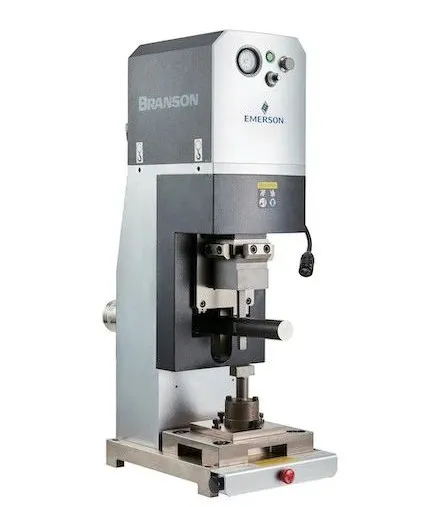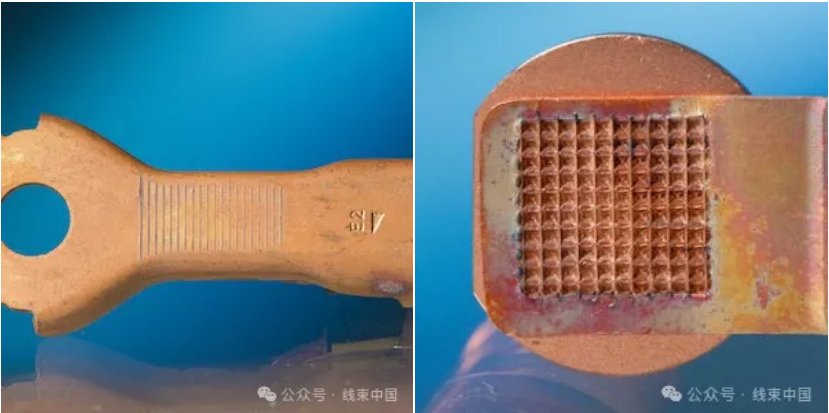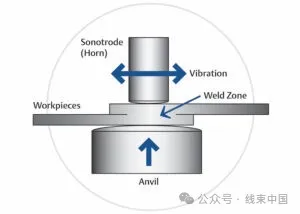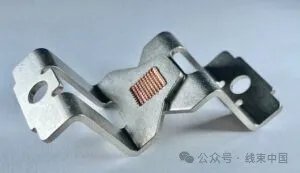The long battery charge time of electric vehicles (EVs), compared to petrol or diesel vehicles, which can be refueled quickly, is a major barrier to widespread acceptance. To overcome this problem, car manufacturers (OEMs) are trying to introduce faster charging systems with peak charging power of 250 kW or higher. While these charging systems only take about 20 minutes to provide a vehicle with enough charge for a range of about 160 miles (depending on the vehicle model), they come with a variety of problems. To increase charging speed and capacity, EV batteries require higher-capacity harnesses and thicker power cables. Today, typical EV batteries and charging stations use copper cables up to 95 square millimeters in diameter, but to meet the demand for faster charging speeds, these cables may soon exceed 120 square millimeters. In fact, until recently, manufacturers have been having problems welding 60, 90, or 120 square mm cables. These problems are caused by the increased power and amplitude requirements required to weld thicker charging cables.
● Increased bending and stretching of the cable strand during the welding process usually leads to increased fatigue of the strand, increasing the risk of failure.
The need for greater welding forces creates excessive friction and heat in the welding area, which not only diffuses to non-welding areas, but also exhibits inefficiency and waste in generating the power needed to weld.
● The increase in cable diameter causes the tool to lose its grip on the cable strand, allowing the strand to slide across the surface of the tool instead of gripping and holding it in place. This results in faster tool wear, more frequent tool changes, increased energy consumption, and unnecessary stress on welding equipment.
These issues are a huge challenge for an industry that has been experiencing rapid growth in demand for faster and more efficient EV charging systems. Emerson engineers studied the issue and found that the increased welding forces required to weld thicker cables pushed the cantilevered actuator arms used on typical ultrasonic welders to their mechanical limits. This results in vibration, reduced clamping stability and reduced efficiency. Current ultrasonic welding technology needs to be redesigned. To solve this problem, Emerson engineers developed an innovative technology that incorporates a "direct pressure" ultrasonic welding machine.

Figure 1. Emerson'sultrasonic welding machine
The Branson GMX-20-DP "Direct pressure" ultrasonic metal welder represents the next generation of metal welding technology. The GMX-20-DP welding machine uses a new type of vertical actuator motion that is capable of applying a greater clamping force (up to 6100N) than using a cantilevered actuator arm. The new vertical actuator provides more controlled movement and increased downward pressure, eliminating the pressure and vibration caused by the cantilevered actuator arm. In addition, Emerson engineers have redesigned the tools on the GMX-20-DP ultrasonic welding machine in two important ways. Both the horn and anvil are specially coated to increase their hardness and durability, and the welded surface of each component has been added to the pattern, significantly increasing the clamping force of each component. The result is a more consistent and repeatable welding of large cables than cantilever tools. The increased downward pressure of the GMX-20-DP, combined with the redesign of the holding surface of the horn and anvil, eliminates the sliding caused by the cantilevering executive arm. The parts are held firmly while providing more efficient welding energy - all of which results in the stability required for successful welding of 20, 30, 50, 60, 70 and 95 mm square cable cross sections, as well as other large pieces. The new technology also offers a gentler, higher-quality, low-stress cable welding, typically with 30 to 40 percent lower amplitude than the ultrasonic technology previously used to weld EV battery cables. The new tool design, coupled with the vertical welding motion of the direct pressure welding machine, also eliminates rapid tool wear caused by cantilever actuators. The reduction in tool wear not only ensures more consistent tool performance, but also significantly increases the interval between tool changes.

Traditional cantilever ultrasonic metal welders can be stressed when welding thicker materials, resulting in high amplitudes and limited tool grip on the part leading to "slip" marks.
Overall, the GMX-20-DP welding machine achieves significant improvements in large cable metal welding due to a unique combination of a unique tool design, enhanced direct downward pressure, and a more controlled welding process than previous cantilever actuator technology. Ultrasonic welding is created by applying high-frequency vibrations between two metal components that are tightly clamped between the upper ultrasonic probe (or horn) and the lower anvil (see Figure 3). One of the component parts is placed on the lower holding anvil and is held there by the pattern on the tool surface. The actuator of the welding machine lowers the horn to hold the metal components tightly together at the specified pressure. Vibrations are then applied and welding occurs as the horn vibrates horizontally through the fixed anvil, first "wiping" away surface oxides and other potential contaminants. The oscillations continue and the heat generated connects the clean bonded surfaces.

Figure 3. Schematic diagram of ultrasonic metal welding process.
The heat produced by the oscillation is usually about one-third to one-half of the melting point of the material used. This makes it possible to join materials into strong bonds without melting, burning through the film, or creating unwanted intermetallic compounds that can degrade the bonding quality between component parts. Unlike melting the surface of a material, ultrasonic welding is done by breaking the raised part of the surface and diffusing atoms that crystallize into a fine-grained structure when the vibration stops to form a continuous welded bond. This process occurs in a fraction of a second welding cycle, resulting in a bond with a structure similar to that of cold-worked metal. Ultrasonic welders also have the unique versatility that they can be operated gently enough to incorporate multiple layers of thin and fragile metal foils, or with different parameters that can be powerful enough to create strong bonds between large metal parts and conductors (see Figure 4).

Figure 4. Robust, efficient ultrasonic welding can not only splicing small and large wires, but also splicing wire terminations.
Ultrasonic metal welding and bonding: process advantages
● Suitable for many types of non-ferrous metals, from thin films to large conductors
● Create permanent metallurgical bonds between different metals
● No melting required - does not change the chemical or metallurgical properties of the material
● Ideal for connecting highly conductive alloys: Material reactivity does not matter
● No intermetallic compounds, particles or reactions that cause corrosion
● Maximum conductivity and minimum resistance for connections
● Multiple control methods enable process customization, repeatability and statistical process control
● Low energy consumption (30 times less energy consumption than fusion or resistance welding), no consumables
● Lowest total cost per weld of any welding technology
Aichie provides auto wiring harness , high voltage ev cable assembly and low -voltage auto wiring harness around the world. It has introduced new production equipment, which greatly improves the quality and efficiency of production. Customers are widely distributed in Europe and North America. Production employees and experienced engineering teams and sales teams serve our customers; please contact us now! We will provide you with competitive prices!
WeChat: 180 2750 2150
Tel: +86 180 2750 2150